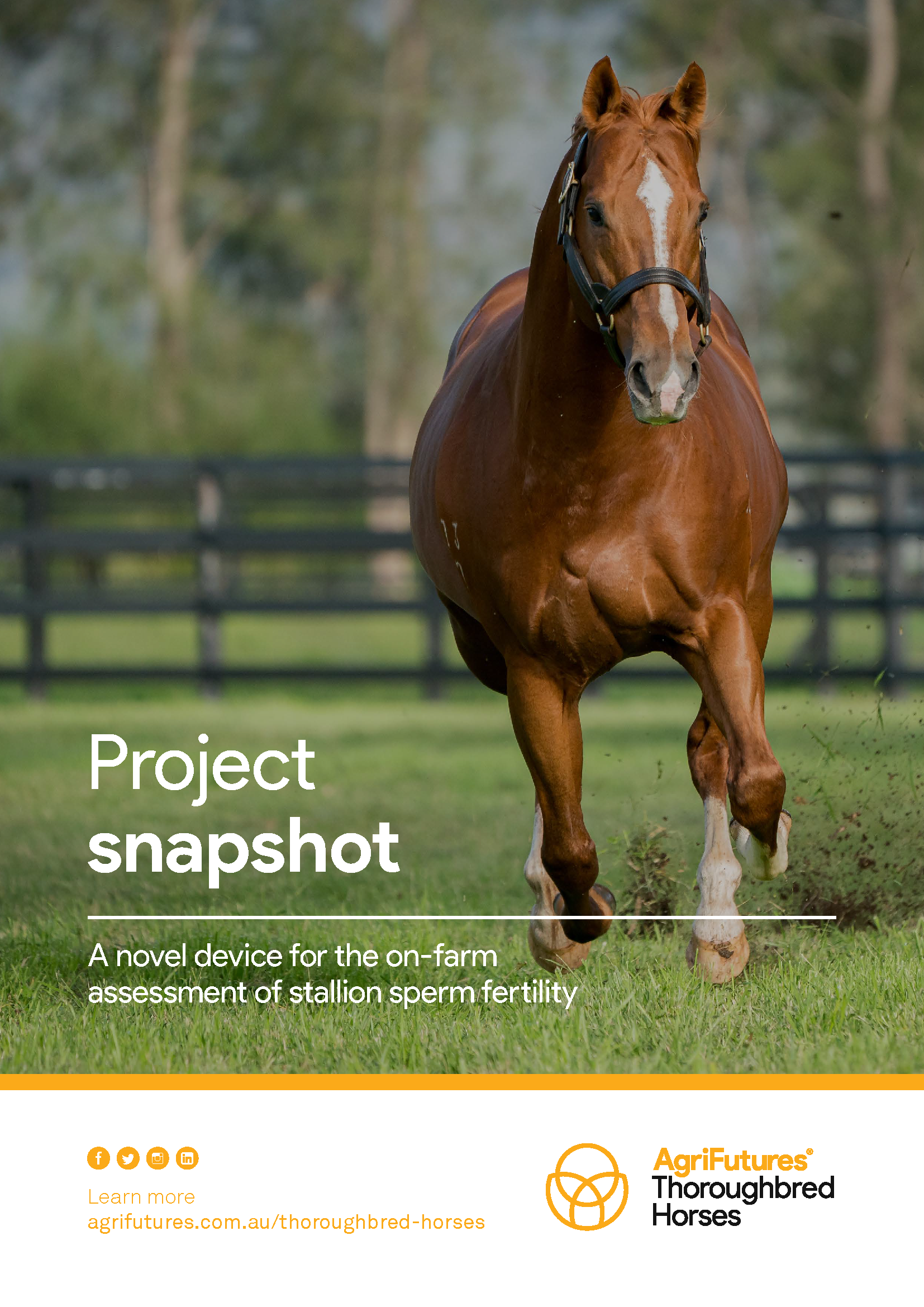The relative fertility of thoroughbred stallions is highly variable, ranging from 35% to 90%. Owing to the short four-month breeding season, and the 14-day delay between breeding and pregnancy diagnosis, breeders require a method to rapidly identify ejaculates unlikely to achieve a pregnancy. Stallion fertility is dependent upon the sperms’ ability to efficiently produce energy. This biochemical pathway has been exploited to develop a prototype device – named ‘Equility’ – that measures the energy-producing capacity of spermatozoa in a post-breeding ‘dismount’ semen sample.
Field trials showed that Equility readings were significantly higher in samples that achieved a pregnancy compared with those that did not. This is the first device of its kind that delivers high-quality, biologically meaningful science on-farm without the need for specialist expertise or prohibitively expensive equipment.
Adoption of Equility into the breeding shed will enable managers to make informed decisions about strategic breeding practices (such as cross-covering mares in the same oestrous cycle) to increase conception rates. This will greatly reduce the economic costs associated with breeding and improve the welfare of thoroughbred horses. Equility, along with the single-use cassettes, are designed to suit bulk manufacture, and the commercial arm of the University of Newcastle is progressing with patenting the technology.





